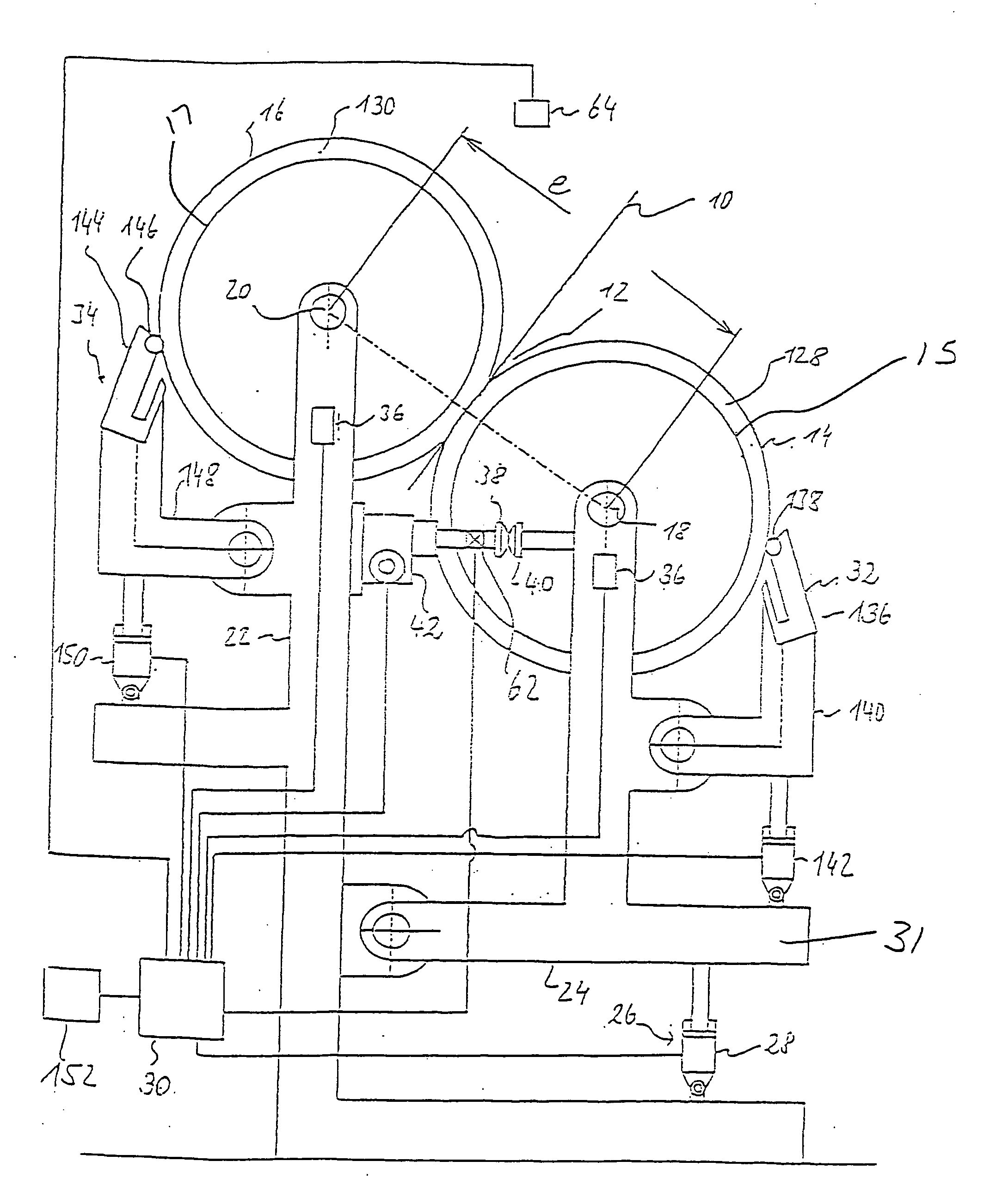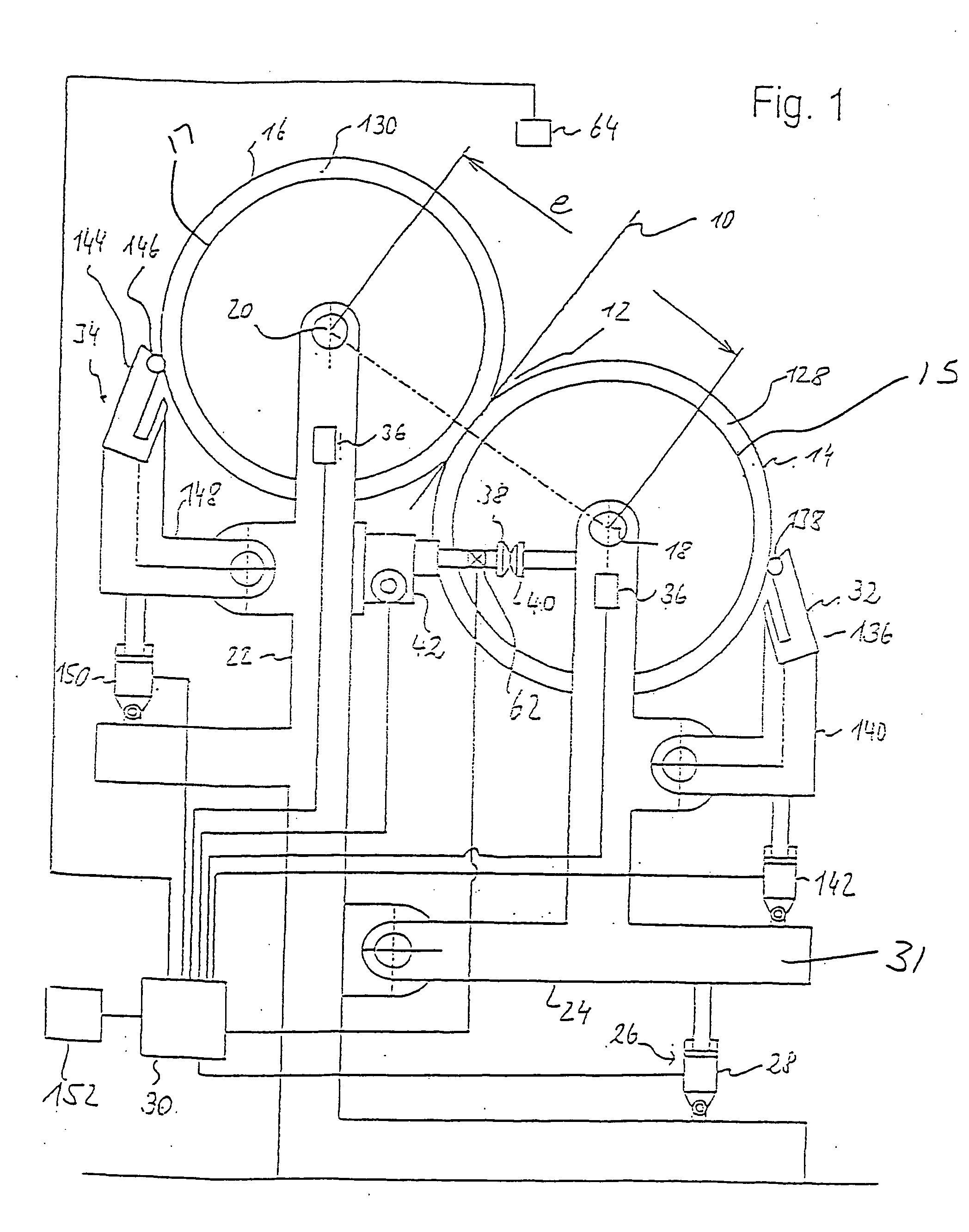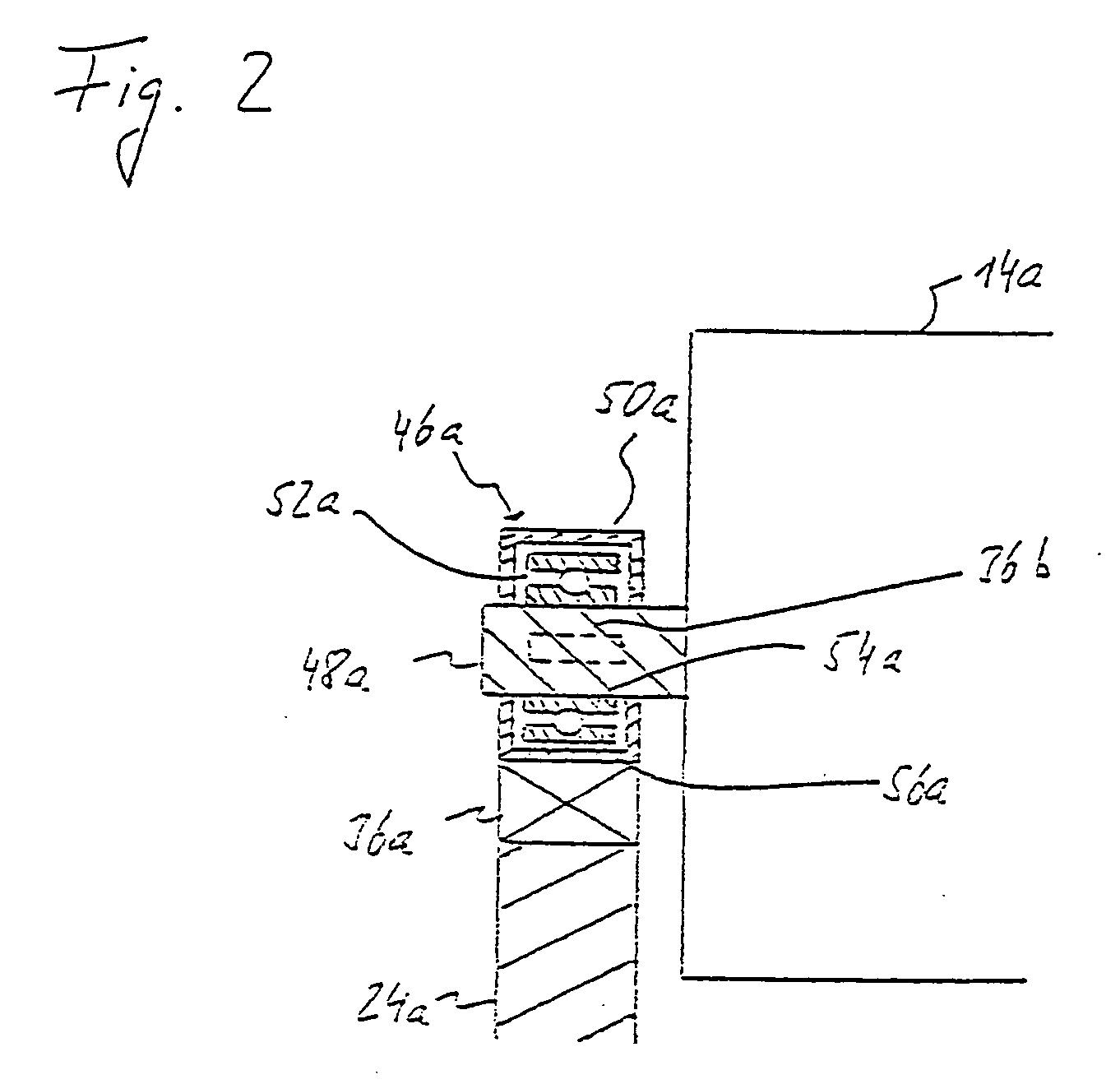Device, method and arrangement for pressing two axis-parallel rollers approachable to one another in a device for producing and/or treating a web of material
a technology of two axis parallel rollers and a pressing device, which is applied in the direction of pressing section, transportation and packaging, web handling, etc., can solve the problems of more expensive and difficult roll production, and achieve the effect of less expensive and less complicated roll production
- Summary
- Abstract
- Description
- Claims
- Application Information
AI Technical Summary
Benefits of technology
Problems solved by technology
Method used
Image
Examples
Embodiment Construction
[0043] Referring now to the drawings, and more particularly to FIG. 1, there is shown a coating unit that is used for the indirect application of a liquid to pasty application medium, for example a pigment-containing coating color or a surface size, to both sides of a moving material web 10 of paper or board. Material web 10 moves through application gap 12, designated a nip in technical language, which is formed between two adjacently arranged rolls 14, 16 including roll bodies 15, 17, respectively. Roll bodies 15, 17 include the cylindrical portion of rolls 14, 16 and can also include covers 128, 130 on rolls 14, 16. Rolls 14, 16 are arranged with their axes 18, 20 parallel to each other. One of the rolls, roll 16, is used as a fixed roll, as it is known, while the other roll, roll 14, forms what is known as a moving roll. Roll 16 is arranged such that it can rotate about its axis 20 but is otherwise fixed in position, while moving roll 14 can be moved toward fixed roll 16 and awa...
PUM
 Login to View More
Login to View More Abstract
Description
Claims
Application Information
 Login to View More
Login to View More - R&D
- Intellectual Property
- Life Sciences
- Materials
- Tech Scout
- Unparalleled Data Quality
- Higher Quality Content
- 60% Fewer Hallucinations
Browse by: Latest US Patents, China's latest patents, Technical Efficacy Thesaurus, Application Domain, Technology Topic, Popular Technical Reports.
© 2025 PatSnap. All rights reserved.Legal|Privacy policy|Modern Slavery Act Transparency Statement|Sitemap|About US| Contact US: help@patsnap.com



